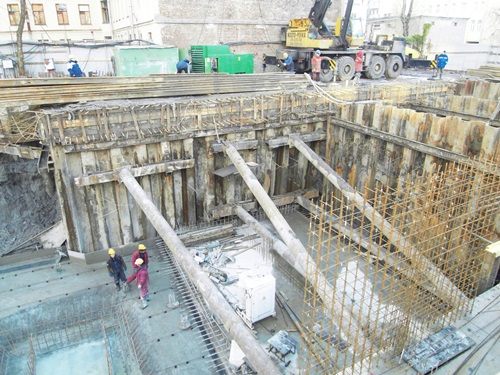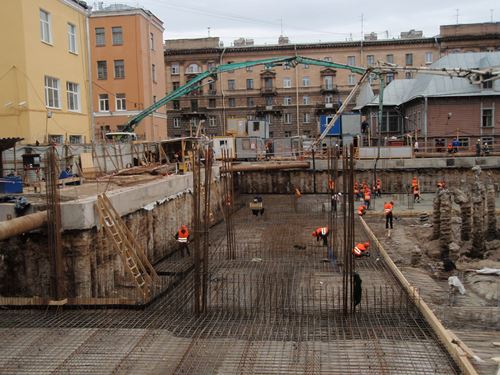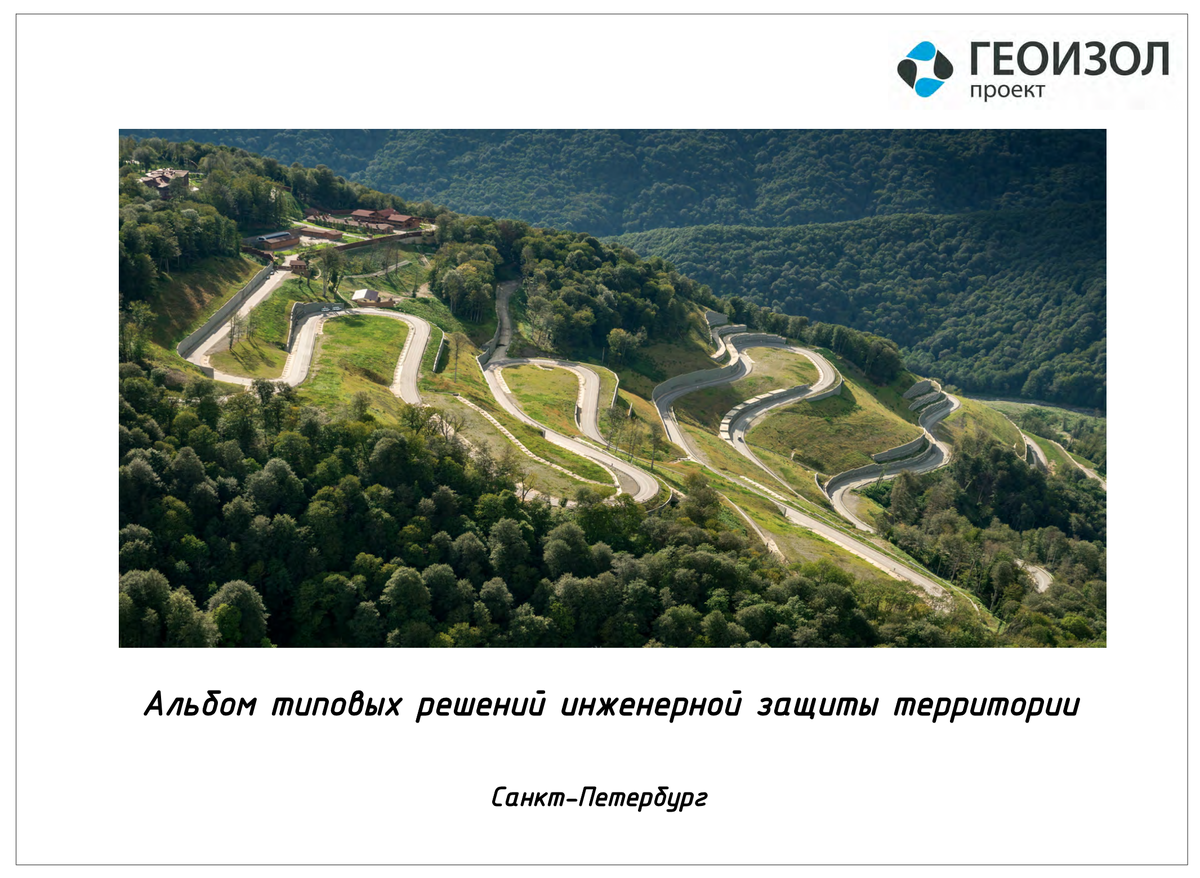The project of retaining structures is generally carried out in case of the following factors:
- soil with complex geology;
- high level of ground water;
- low strength and deformation properties of soils;
- dense urban conditions.
The above conditions make construction of retaining structures by traditional methods difficult and very often impossible. In such cases special methods of retaining structures construction are used.
Most often sheet piled enclosure structures, enclosures of tangent piles and secant bored piles are used. At the depth of excavation pit up to 6 – 7 m and lower enclosures are constructed according to the slurry trench method.
Design features
Efficient and economically sound constructive solutions on excavation pits retaining structures allow cutting their cost by the most preferable sequence of execution of works, combining different types of struts, considering previous experience.
Resistance to deformation and flexural rigidity rather than reliability is of great importance during the defining of the parameters of retaining structure (if the excavation pit is situated close to the objects constructed earlier). These parameters affect the potential shifting of buildings and facilities. Parameters of shifting are strictly determined by the standards in force.
Calculation features
During the calculation of excavation pit retaining structure special modern software is used: Plaxis, Midas GTS NX. Depending on task complexity, retaining structure type, strutting methods and location of the excavation pit in reference to existing buildings the calculations are made both for plane and three-dimensional models.




